Gaurav Bhattacharya acknowledges he didn’t make the best impression on his co-founder, Saumya Bhatnagar, when they met in a high school coding class in New Delhi.
Out of 160 students, Bhatnagar was the only female.
“My first interaction with her was, ‘I think you’re in the wrong class,” Bhattacharya said, noting the error of his ways. “She got really mad.”
But he managed to smooth things over. Since then, the entrepreneurs have founded two companies together. The first, launched in India in 2007 while they were teenagers, created radiology software that helped fight female foeticide. It was acquired by the Indian government in 2012.
Each of the founders moved to the U.S. after the sale, with Bhattacharya taking a job as a consultant for PricewaterhouseCoopers, and Bhatnagar enrolling in a graduate computer science program at UC Santa Cruz.
Given how hard it was to get the first business off the ground, Bhattacharya thought he was done with startups. But then he met his old friend for coffee in Santa Monica.
Having done human resources consulting work for two years, the topic was at the front of Bhattacharya’s mind. Meanwhile, Bhatnagar was working on a project with Google analyzing the way existing customers create new ones.
“She said, if you were to do the same analysis for employees … which employees are successful, and which ones are going to leave … how do you really do that? We both got obsessed with it,” Bhattacharya said.
In 2016, they launched their second company together: InvolveSoft, a a SaaS platform that allows companies to streamline employee engagement programs such as volunteering events, team activities, leadership and training courses, as well as diversity and inclusion modules.
As a proud investor in InvolveSoft, we sat down with Gaurav to learn more about the company — and his own story.
Can you tell us a bit about your childhood and how you got into coding?
I grew up in a very humble family - a blue collar household. I lost my dad to cancer when I was 2 years old. My mother used to sell utensils. We didn’t always have food on the table, so I would sell pens and pencils on the street. I got really lucky when I was about 10 years old. Microsoft had a program where they would send engineers to teach kids in the community. I got an old Windows 95 PC, and I started to learn how to code. I picked it up really fast and got addicted. I was coding almost 10 hours everyday, seven days a week for a few years. Then I was able to get some money through their program and join a very reputable high school in Delhi, and I met my co-founder there.
Why did you decide to come to the U.S. after selling your first company?
After we sold the company, my first reaction was, ‘I’m done with startups.’ It’s hard! I knew someone at PricewaterhouseCoopers, and they thought really highly of me. So, they invited me to become a consultant in the New Jersey area.
How did you reconnect with Saumya?
She was up in the Bay Area, and I was in San Diego for a project. We decided to meet, and we were talking about ideas. One thing we talked about was how can millennials use more programs that HR introduces? We wanted to build something really simple like an employee community platform. Since we were in Santa Monica, we thought, ‘OK, let’s do it here!’
Why did you want to focus on millennials?
By 2025, 75 percent of the world’s workforce will be millennials. There are so many young people coming into the workforce, and they don’t want the same things as the Gen Xers or Baby Boomers. We started talking to a lot of people - a lot of really big HR companies and consultants. We realized that the focus of the industry is still very much toward benefits and the traditional 401Ks. So the question becomes, how do we cater to this new audience, which is going to be the majority? We wanted determine what excites people, what motivates people at work, and really do analysis on how we can keep them longer and keep them motivated. That was our vision.
How did you turn that vision into a product?
I met with Will Hsu from Mucker, and I was telling him we’re going to create this community platform. I hadn’t even quit my job. I told him it’s going to be like Slack, but for employee communities. He said, ‘What are you going to seli it as? Salesforce has the cloud platform, and there are enterprise marketing platforms, but there’s no bracket you can put this in.’ I told him, ‘I’m going to sell this as culture as a service for companies.’ Will really liked it. He was like, ‘How are young going to do it?’ I told him, ‘I have no idea.’ He said, ‘You guys should come work out of Mucker,’ and that’s where we started and created our first landing page.
How does it work?
Right now, it’s very focused on social impact. When companies go on the platform, they can add their employees and choose the causes and skills they’re passionate about. Then we match them with local volunteering and social-impact opportunities. We source almost 180,000 opportunities every month across the U.S., and hopefully very soon all across the globe. All you need to do is say ‘I love journalism,’ or ‘English literature,’ and we can match you up with something two or five blocks away. You can go with your co-workers, or family and friends. You can work with a nonprofit where they teach kids about American history or English lit, or about poetry. And it’s a network. There are integrations with social media, and it’s very seamlessly integrated with other tools you’re using at work and also in your personal life. You can share pictures, talk to each other, tag people, and use all the community features to get higher engagement and that gratifaction of sharing something, and encouraging other people to pick it up and join your community.
How does that help the company as a whole?
The company can measure that impact and see how they are moving the needle and really see advanced reporting: how many hours are people volunteering? What is the community engagement? What’s the impact?
How many clients do you have?
We have close to 100 now and close to 110,000 employees on the platform. Our goal by the end of the year is to have 1 million people use the platform, and have close to 150-180 companies. We have companies from 100-employee size to 50-employee size. We’re signing up a company next month with 155,000 employees. I think it’s a solution that can be catered to anyone.
How did Mucker help you grow the product and company?
One of the things that was really good for us about the experience was that in the beginning we really didn’t know what to do. This was our first company in the U.S. The first company that we had in India, we were adopted by a hospital really early on, and they would just sell the product for us. We didn’t have to care about usability. We were coming into a totally different situation where we had to do enterprise sales and marketing, inbound sales, and talk to customers. Will and Erik (Rannala) are really good for that because they’re trend spotters. The majority of time, what they’re doing is talking to entrepreneurs and successful companies, so they really helped us come out of the bubble when our heads were down working and showed us what other companies were doing and why. That was the most critical.
Did you heed their advice?
As an entrepreneur, you’re very stubborn. I remember every time Will and Erik gave me a new idea, and I said ‘no” because I wanted to focus, a month later I would have to do that thing and it would be really successful for us, and I’d go back and say, ‘You were right.’ The hands-on mentorship and helping us connect the dots - that’s really valuable. They can see another SaaS company in a different vertical, but with the same-size contracts and say, ‘This is what you should be doing differently.’
Tell us about the financing you just closed and what you’ll use it for.
We did a little bit over $2.5 million. We raised money from Bonfire Ventures, BDMI, Greycroft, Launch Capital, CrowdSmart, and No Name Ventures. We also have another angel who joined the round. We’re first going to expand a lot of features, and we’ll be launching a a cross-company collaboration module in which you can participate in events with different companies. We’ll be spending a lot of time on engagement and adding new modules and improving our content. The second thing is improving defensibility. We’re collecting so much data. We can also do a lot of trend analysis that can help companies and departments analyze what they are missing.
How have you evolved as a CEO since your first company?
I’ve learned that everyone should be focused on one single goal rather than having 1,500 goals. If it’s revenue, then it’s important to have that be everyone’s top goal and focus on that. Every contribution, even from programmers, should be helping increase the revenue of the company. The second thing is it’s OK to tell your staff when things are bad, or tell the client when the product release didn’t happen or has a lot of bugs. Before, I’d try to hide everything and give them only the happy news. The same goes with investors. It is OK to tell them what’s going on, because then everyone can understand, and you don’t have to bottle it up. We have a Slack channel, and we share our wins and losses at the same time, so it can be a learning experience.
What’s the weirdest thing you’ve had to deal with as CEO?
Immigration is really hard here. It’s a pain dealing with lawyers and proving you’re trying to do something valuable. We’ve created 10 jobs, and we’ll probably create 20 more in the next year, and maybe hundreds more. This same time last year, I applied for a visa and got rejected. I had to apply for an O-1 visa in two days, which is a super specialty visa. Someone was telling me that David Beckham and Elon Musk came here on an O-1 visa, so it was really hard to get. The whole process is very hidden, because if it’s hidden then people make more money; lawyers make more money. That was the hardest part.



